How Peru Changed Me: A Bridge Between Two Worlds
Hello everyone, my name is Camilla Fezzi, and you probably know me, always running around, without any free time, and I am kind of recognizable because of my Italian (fashion style) 😜.
I’m a freshman at Caltech, with the goal of double majoring in biology and chemistry and dreaming, one day, of becoming a doctor and researcher in the oncology/neuroscience field. But before I am any of those things, I am Italian—a daughter, a sister, a friend. I grew up beneath the Verona sun, in a place where the dinner table is sacred and where family is the compass that guides everything. I have always known warmth—of home-cooked meals, of laughter echoing through ancient streets, of a mother’s arms around my shoulders. I know what it is to feel safe, to take fresh water and a doctor’s appointment for granted.
And yet, I have always had a restless heart. Maybe it’s the scientist in me, or maybe it’s just curiosity, but I have always wondered what life is like beyond my own familiar hills. I wanted to see the world, not just as a tourist, but as a participant. To be useful. To serve. To understand. During sprain break I left few days early and alone, leaving my comfort zone I flew for my first time to South America. That’s how I found myself, heart pounding and suitcase rattling, stepping off a plane in Lima, Peru, with MEDLIFE. The air was thick, and the city pulsed with a kind of energy I had never felt before—a wild, unstoppable current that swept me along before I even had time to catch my breath.
In Italy, we talk about our struggles. We talk about politics, about jobs, about dreams that sometimes feel too big for a small town. But most of us don’t worry about whether the tap will run dry, or if there’s enough food on the table. I have argued with my parents about my future, cried over exams, felt the weight of expectation, and sometimes even the heaviness of not knowing who I am.

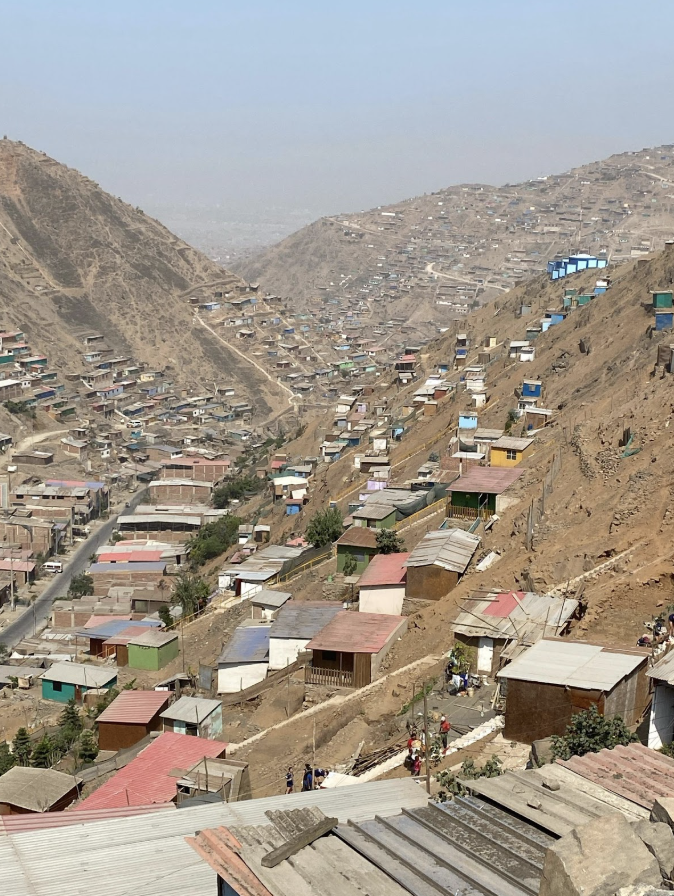
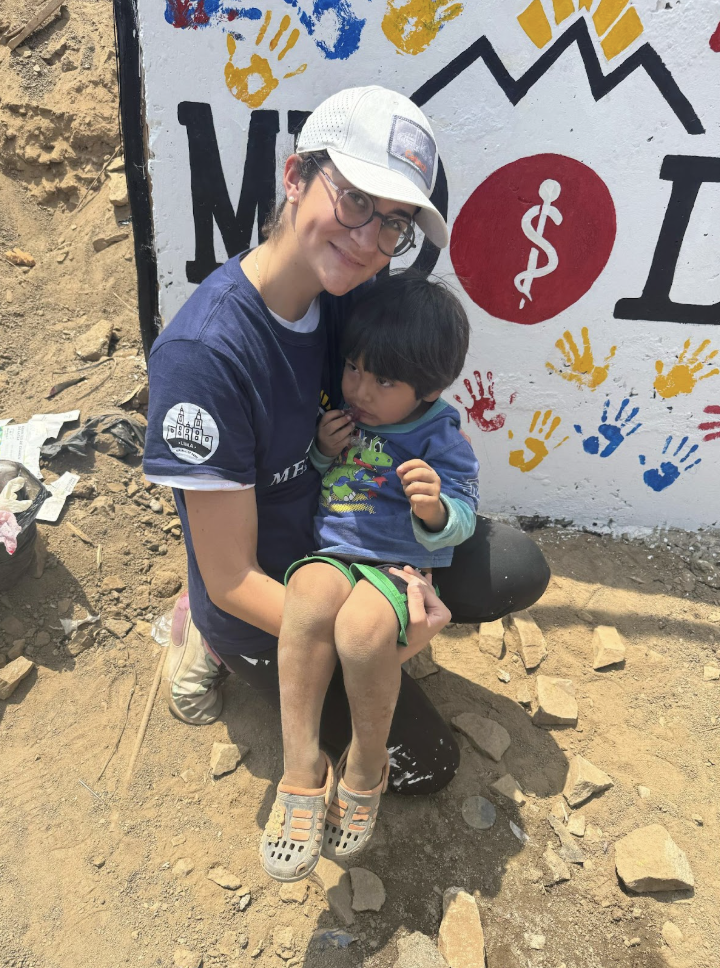
But in Peru, I saw children racing up endless stairs for a bucket of water, mothers waiting all day in the sun for a doctor who might only be able to offer comfort, not a cure. I saw hope shining through dirt-smeared faces—children in Celtics jerseys, little girls with tangled hair and shy smiles. I saw poverty, yes, but I also saw pride. I saw neighborhoods built on nothing but trust, laughter, and the stubborn refusal to give up. One afternoon, as we walked through the hills, our Peruvian guide stopped and looked at me. “You know,” he said, “in Norway, people struggle with the will to live. Here, we fight for water.” His words landed like a stone in my chest. The struggles are different, but the pain is real in both places. There is no monopoly on suffering.
I learned that sometimes medicine is a bandage, and sometimes it’s a conversation. Sometimes the most healing thing you can do is listen. I measured the weight and height of children whose eyes dared me to look away—and I didn’t. I helped build staircases, each step a promise of a safer journey for some family I’d never see again. I painted walls, learned to laugh at my broken Spanish, and let the music of Barranco’s streets seep into my bones.
I met Romiri, a pregnant girl who was barely more than a child herself. I learned her name, and I held her hand for a few moments longer than necessary, because I wanted her to know she mattered. I danced at a neighborhood festival, my feet stumbling on unfamiliar rhythms but my heart beating in time with everyone else’s. I shared stories and food with Crystal, a Chinese-American volunteer who reminded me that identity is a mosaic, not a single tile.
I was changed most by the moments of quiet—by the old woman who thanked us for a staircase that let her visit her sister again, by the doctor in the Amazon who told me, “The medicine is not the cure. The education is the cure.” I saw it in the faces of the Machuchiro tribe, in the wild eyes of children running in the jungle, in the long braids of girls in Cusco who giggled at my accent and asked about my home.
I came to Peru thinking I would give, but I received so much more. I found humility in the face of need. I found joy that defies explanation. I found a bridge between two worlds—between the comfort of my Italian upbringing and the raw, urgent beauty of survival in Peru.
This article is my attempt to honor that journey. It is a collection of memories, mistakes, lessons, and love. It is not a story of saving anyone, but of being saved—by the people who welcomed me, by the land that challenged me, by the realization that I am, and always will be, a bridge between worlds.
If you are reading this, I invite you to walk with me—not as a tourist, but as a fellow traveler, willing to be changed by what you see.
A world away, a reality away
I never understood the full meaning of “distance” until that first night in Lima. My plane landed late, and the city glimmered beneath me, stretching further than I could have ever imagined a city could go. The air was thick-almost tangible, humid with the ocean’s breath and the weight of so many lives. I’d left the stately, predictable rhythm of LA behind, and already, Lima’s music was different: louder, raw, vibrating with a pulse that unsettled and intrigued me at the same time. The drive from the airport was a sensory assault. Even at night, people filled the streets, vendors hawking snacks at stoplights, children weaving through traffic that seemed to obey no rules except momentum. I pressed my forehead to the window, trying to take it all in—billboards in Spanish, graffiti that felt more like art than protest, the faded reds and blues of mototaxis darting like minnows in a stream. The driver, sensing my wonder, simply smiled and said, “Lima nunca duerme.” Lima never sleeps. Arriving at our hostel in MiraFlores (a nice neighborhood in Lima), I was greeted by the soft glow of lanterns and the voices of other MEDLIFE volunteers who had already formed easy friendships over shared exhaustion and newness. My room was simple, well, our room, we were in 12, girls I have never seen in my life, on sky beds, literally in 12 meters squared and ONE shower—a window that overlooked a courtyard, a single bulb that flickered when the fan turned on. I unpacked slowly, laying out my stethoscope and notebooks. I suddenly felt very small, all my confidence shrinking in the shadows of this enormous, unfamiliar place. That first night, sleep was elusive. I listened to the city-stray dogs barking, laughter echoing from the street, the distant sound of a guitar. I thought about home, about my father’s steady voice and my mother’s gentle hands, and wondered if I’d made a mistake. But even beneath the doubt, there was something else: excitement, possibility, a sense that my world was about to grow beyond anything I could imagine. I woke early, the sun just a rumor behind a grey sky, and wandered out to the terrace. The ocean was invisible but close enough to taste in the air. Lima felt ancient and restless, a city built on layers of history and hope. I took a deep breath, letting the unfamiliar become a little less frightening. I was here. I was ready, or at least willing, to let this place change me.
The Call to Serve: Choosing the MEDLIFE Path
My decision to join MEDLIFE wasn’t a single, thunderclap moment—it was a quiet accumulation of questions I couldn’t shake. Why does health feel like a birthright in one country and a lottery in another? What does it mean to serve, truly—not just as charity, but as solidarity?
Back in Italy, I’d volunteered at food drives and tutored younger students, but it always felt like I was playing at the edges of real need. I craved an experience that would unsettle me, strip away the comfort of knowing all the answers. My professors spoke passionately about global health, but their words felt abstract until I saw the MEDLIFE flyer in the university hallway and the club here: “Travel. Serve. Learn. Change.” Something in me said, “Go.”
The application process forced me to confront my own limitations. I wrote, honestly, about my fears—about being a foreigner, about not knowing enough Spanish, about the possibility of hurting more than helping. The MEDLIFE staff encouraged us to see ourselves as learners first, helpers second. That humility, that openness to being changed, was what drew me in. The reality of Peru was more complicated than anything I’d imagined. The first morning, Gladys, our local coordinator, looked each of us in the eye and said, “You have skills, yes. But more important, you have ears and hearts. Use them.” That set the tone for everything that followed.
We spent our first days in orientation—learning how to set up clinics, how to ask questions that didn’t shame, how to respect the boundaries of families who had every reason not to trust outsiders. Our group was a curious mix: future doctors and engineers, artists, a linguistics major who could already switch between five languages. I felt both intimidated and inspired, acutely aware of how much I had to learn.
The first time I stood in front of a line of mothers waiting for care, I realized how much the MEDLIFE philosophy had seeped into me. My purpose wasn’t to fix, but to witness; not to rescue, but to walk alongside. That shift was subtle but seismic. It changed the way I listened, the way I touched a child’s hand, the way I asked, “How can I help?” instead of “What’s wrong?”
Each night, I scribbled in my journal—scraps of dialogue, the names of children, moments that made me question what I thought I knew about medicine and myself. I could feel my old ambitions stretching, reshaping themselves around a new understanding of what it means to serve. I was no longer just a student—I was a guest, a witness, a participant in stories that would stay with me long after the trip was over.
First Impressions: Lima’s Contrasts
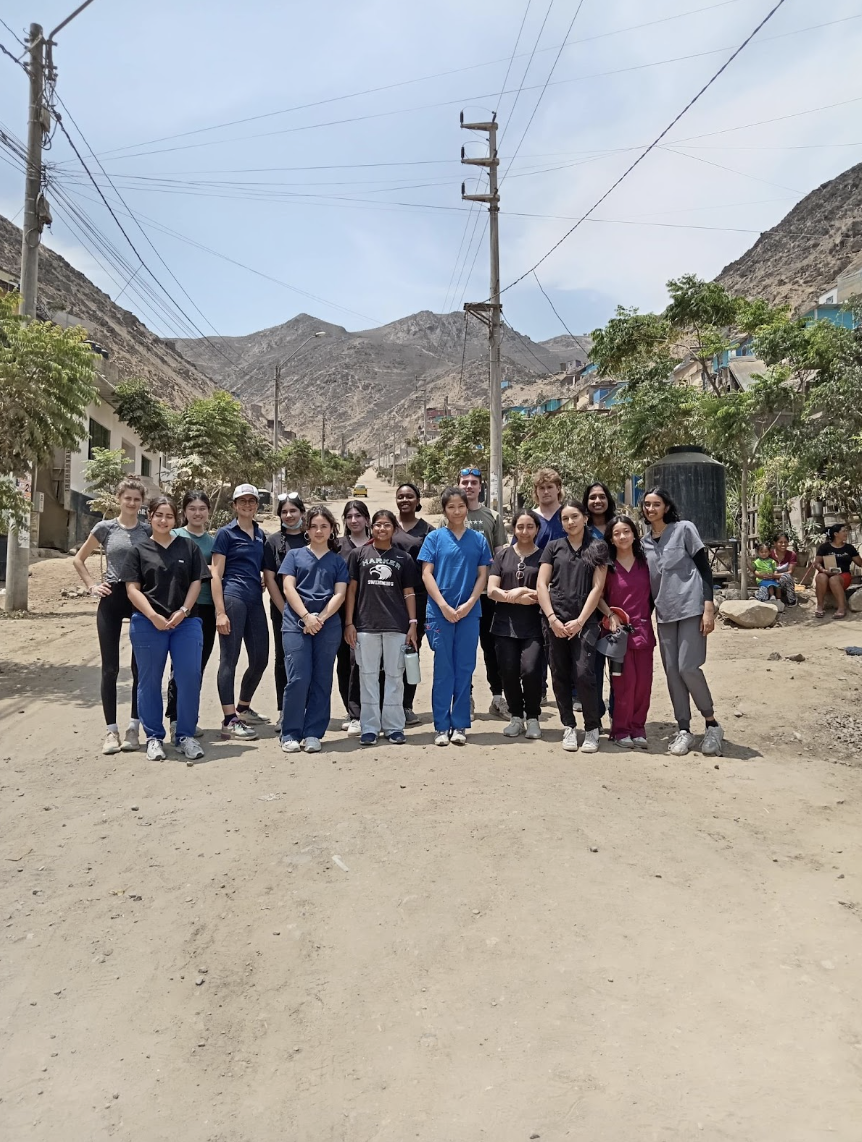
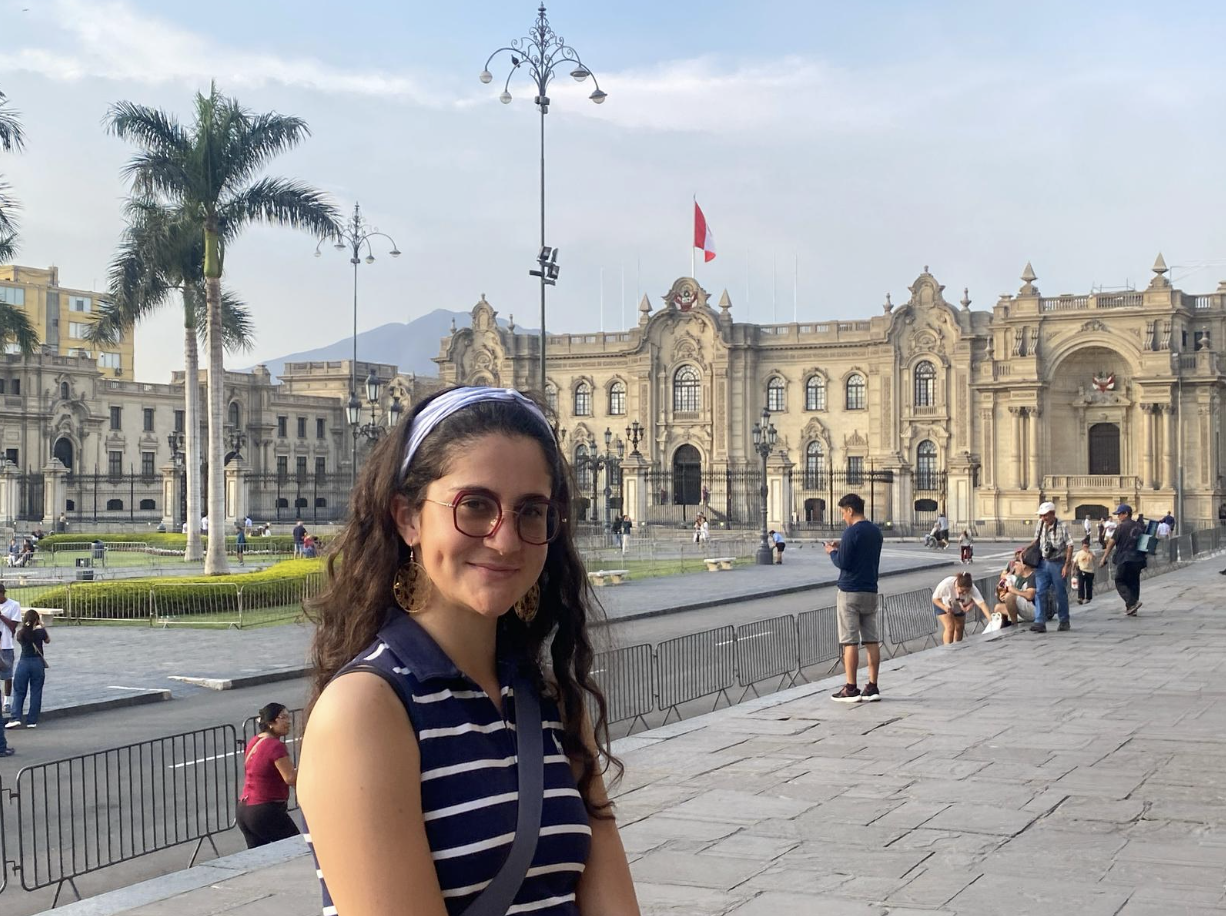
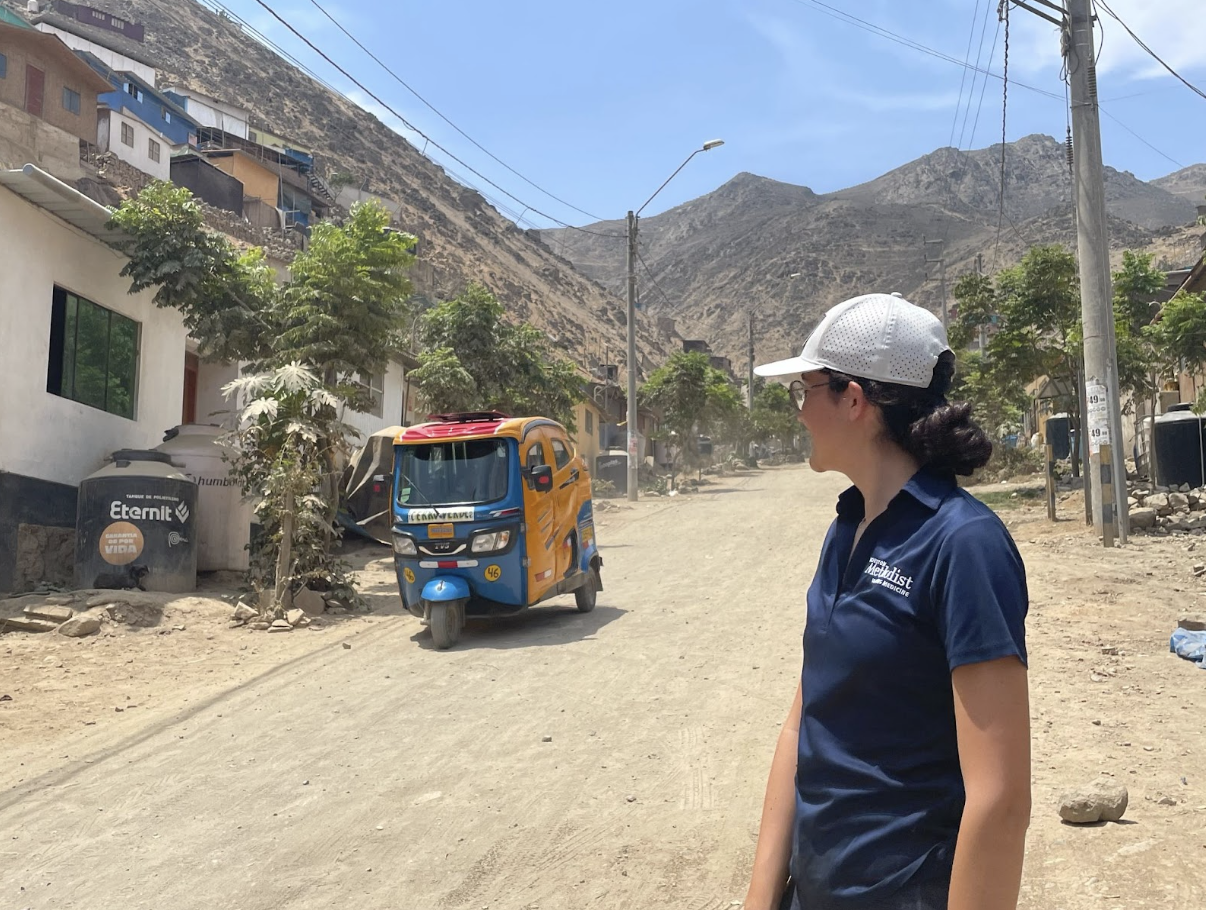
Lima is a city where opposites do not just coexist—they collide. Each morning, the bus ride to our project site was a lesson in contrasts. One moment, we passed shiny malls and manicured parks, the next, we climbed into the hills where roads dissolved into dust and houses stacked atop each other like building blocks left behind by a careless child.
I remember the first time I saw the city at dawn. The fog hugged the ground, softening the edges of brick and tin. A woman swept the stoop in front of her home, pausing to wave at a neighbor who balanced a basket of bread on her head. Above us, murals exploded in color—here, a goddess with wild hair; there, a flock of birds escaping a broken cage. I was struck by how art seemed to push back against the bleakness, as if the city itself refused to be defined by its hardships.
What startled me most was not the poverty, but the pride. People kept their homes immaculate, even if their walls were patched with cardboard. Children wore their school uniforms with care, even when their shoes were too small. There was a dignity in the way families stood in line for the mobile clinic, in the way they greeted us with “Buenos días” and a smile that reached their eyes. The disparities were everywhere, but so was ingenuity. I watched a group of teenagers use a plastic bottle and some string to create a makeshift soccer ball. I saw mothers handing out steaming cups of avena (oatmeal) to neighbors as the day began. I heard laughter—so much laughter—in places I would have expected only fatigue and tears.
One day, I got lost on my way back from the market and ended up in a narrow alley where a young boy was teaching his little sister to read. He looked up at me, wary but unafraid, and when I smiled, he returned it shyly. I realized, in that moment, that the Lima I was seeing was not one of victims, but of survivors—of people who, despite everything, chose hope.
Every evening, as the sun set behind the hills, the city seemed to exhale—a brief moment of peace before the night’s chaos returned. I would sit on the hostel’s rooftop, watching the lights flicker on, and feel both the weight of what I’d witnessed and the privilege of being allowed to witness it at all.
Barranco: Art, Music, and the Soul of a City
If Lima’s hills were the city’s backbone, Barranco was its beating heart. I quickly fell in love with the neighborhood’s bohemian spirit—its tangled streets, its riot of colors, its refusal to be ordinary. On weekends, I wandered the streets with other volunteers, drawn by the sound of music and the scent of street food. There was always something happening—a guitarist perched on a stoop, a painter hunched over his mural, a group of teenagers breakdancing in the plaza. Barranco was alive with creativity, and it welcomed outsiders with open arms.
One afternoon, I stumbled into a tiny gallery where the artist himself explained each piece. He told me how, during the pandemic, he painted murals on abandoned buildings to bring hope back to the neighborhood. His eyes shone with pride. “Art is how we survive,” he said, and I believed him.
The ocean was never far away in Barranco. Some mornings, I’d walk to the cliffs and watch the surfers chase waves below. The sea was wild and unpredictable, like the city itself. Standing there, wind tangling my hair, I felt a rare sense of freedom—a reminder that there was more to life than schedules and deadlines. Barranco taught me the value of joy—even defiant, imperfect joy. It was in the music that spilled from open windows, in the laughter of friends sharing a single plate of ceviche, in the children racing through puddles after a sudden rain. I learned to dance badly, to eat with my hands, to say yes more often than no. I learned that survival is not enough; we are built for celebration, even when there is little to celebrate.
I carried Barranco with me everywhere after that—a reminder that beauty can be an act of resistance, and that sometimes, the soul of a city is found not in its monuments, but in its music.
Stairways of Hope: Building, Painting, Belonging
I thought I knew what hard work was until I spent a week building stairs in the hills above Lima. Every morning, our team would trudge up dusty paths, greeted by the smell of wood smoke and the calls of early-rising children. The task was simple—mix cement, haul bricks, lay down steps—but the meaning was anything but. Each staircase we built felt like a small revolution. Families would gather to watch, children eager to help, elders offering advice and encouragement. The work was grueling; my arms ached, my skin burned, and there were moments I wanted to quit (A-LOT!). But the laughter and gratitude of the community kept me going.
The painting was my favorite part. We let the kids choose the colors, and they picked the brightest ones—turquoise, tangerine, sunflower yellow. Their hands left prints everywhere, little smudges of joy that would last long after we were gone. One boy insisted on painting a sun at the top of the stairs. “So everyone remembers to be happy,” he explained with a grin.
It was during these projects that I truly felt I belonged. The language barriers faded, replaced by shared purpose, my Italian-English-Spanish was very functional. We ate together—rice and beans, fresh mangoes passed from hand to hand. We celebrated every finished step with cheers and sometimes a dance. I learned the names of every dog on the hill, and they learned to beg for my sandwich. On our last day, as we watched an elderly woman climb the new steps with ease, she turned to us, tears sparkling in her eyes, and said, “Ahora puedo ir a ver a mi hija.” Now I can go see my daughter. Her gratitude was a gift, one I will carry with me for the rest of my life.
Building those stairs taught me that hope is not abstract. It is built, brick by brick, hand in hand, in small acts of care and connection. In the end, it was not just the community that changed—it was me.
Children of the Hills: Eyes That Speak
The children in Lima’s hills taught me more than any textbook or lecture ever could. Their world was a patchwork of dirt paths, makeshift homes, and laughter that cut through the morning fog. They greeted us each day with curiosity, sometimes shy, sometimes bold, but always watching—eyes wide, searching, and impossibly alive. I remember the first time I knelt to tie the shoelace of a little boy who couldn’t have been older than five. His shoes were worn thin, the laces knotted and frayed. He watched me with a strange mixture of suspicion and hope, as if unsure whether kindness was real or a trick. When I finished, he whispered “gracias” and darted away, only to return minutes later with a handful of wildflowers, pressed into my palm with a bashful grin.
There was a language to their play—a mix of Spanish, Quechua, and the universal code of running, tumbling, and shrieking with joy. Soccer balls made of tied-up plastic bags, jump ropes fashioned from bits of wire, dolls with faces drawn in marker. They invented games out of nothing, turning rocks into treasure and abandoned tires into carnival rides. I saw, too, the shadows behind their eyes. The way some flinched at sudden movements, or clung to younger siblings with protectiveness that felt too heavy for such small shoulders. One girl, Lucía, wore her school uniform every day, even when there was no class. She said it made her feel smart, closer to her dream of becoming a teacher. She asked me endless questions about Italy, about what I studied, about whether snow was really as cold as it looked in pictures.
During the health clinics, I watched children line up with their mothers, fidgeting nervously as we measured their height and weight. Some were undernourished, their arms thin as reeds, but their spirits were fierce. They giggled as I tried out my Spanish, correcting me with peals of laughter when I stumbled over a word. One tiny girl named Marisol insisted on teaching me a new phrase every day. By the end of the week, my notebook was full of her careful handwriting—her gift to me.
What struck me most was their resilience. Even after a long day of work, after carrying water up endless stairs or caring for younger siblings, they found ways to make joy. A game of tag at sunset, a dance in the dust, a song for no reason at all. Their eyes told stories—of hunger, yes, but also of hope, determination, and a stubborn refusal to be defined by what they lacked.
Sometimes, after the clinics closed and the tools were packed away, I’d sit on a crumbling wall and watch the children play as the sun slipped behind the hills. Their laughter echoed down the valley, a promise that life could be bright, even in the hardest places. I realized then that what I offered them was so small compared to what they gave me: a reminder of what it means to be open, to be brave, to dream. Then I felt extremely alone
Learning the Language of Kindness
If there is one language that transcends all borders, it is kindness. My Spanish was clumsy, my accent stubbornly Italian_English, but I quickly learned that a smile, a gentle touch, or a shared laugh could build bridges words could never cross.
Each morning, I tried to greet everyone I met with “buenos días,” letting the warmth of my intention make up for the awkwardness of my pronunciation. Sometimes I stumbled, sometimes I was met with puzzled looks, but more often, faces lit up with recognition and encouragement. “Hablas bien,” they’d reassure me, even when it wasn’t true…at all.
In the clinics, kindness became a necessity. Mothers arrived anxious, holding sick children close, their eyes scanning our faces for reassurance. I learned to slow down, to kneel so I was on their level, to offer a gentle “todo va a estar bien” even when I couldn’t promise it was true. The doctors modeled patience—explaining treatments, listening carefully, never rushing. I watched the way they touched a shoulder, the way they waited for a mother’s nod before beginning an exam. There were moments when kindness was all I had. Once, a little boy named Ernesto arrived with a deep cut on his hand. He was brave at first, but as the nurse cleaned the wound, he began to cry. I didn’t have the words to comfort him, so I simply took his other hand, squeezed it gently, and hummed a lullaby my mother used to sing. His sobs faded, replaced by hiccups and then, finally, a shaky smile.
Sharing meals became another language of care. Families offered us bowls of soup, cups of sweet, milky coffee, sometimes even their only piece of bread. I struggled at first—to accept so much from those who had so little—but I learned that accepting was its own form of respect. It was a way of saying, “I see you as equal. I trust you.” We laughed over spilled drinks, compared recipes, swapped stories about our homes.
Sometimes, kindness meant stepping back—letting community leaders take charge, letting mothers comfort their children, letting a local nurse explain a treatment in her own words. I learned to listen more than I spoke, to let go of the need to be in control.
The Weight of Disparity: Water, Food, and Dreams
The hardest truth I faced in Lima was the weight of disparity—the daily, grinding reality that some have so much and others so little. I saw it everywhere: in the lines for water trucks, in the patchwork of roofs barely holding back the rain, in the eyes of mothers who counted every coin. Water was a constant struggle. Whole neighborhoods depended on deliveries from aging tanker trucks, their schedules unpredictable. I watched as families collected every drop in battered buckets, rationing it for drinking, cooking, washing. Children learned early not to waste a sip. On days when the truck didn’t come, tension hung in the air, and mothers gathered in the street, sharing rumors and worry.
Food was another battleground. The local markets brimmed with color—piles of mangoes, sacks of rice, mountains of potatoes—yet for many, the prices were out of reach. I visited a comedor popular, a community kitchen where women cooked enormous pots of lentils and rice to feed dozens of families. The food was simple but nourishing, and the sense of solidarity was palpable. Everyone contributed what they could—an onion here, a handful of beans there. When I joined them, peeling potatoes and listening to their stories, I felt a kinship born not of shared language, but of shared purpose.
Education was a dream for many, but also a privilege. I met children desperate to go to school, their hopes pinned to a worn uniform or a borrowed textbook. Some walked for miles each day, braving mudslides and stray dogs, determined not to let poverty steal their future. Others stayed home to care for siblings or help their parents work. I saw the pain on their faces, the way they watched their friends leave for class with a mixture of envy and pride.
The disparities wore on me, gnawed at my conscience. Why should a child’s future depend on where they are born? Why should a mother have to choose between water and medicine? I wrestled with these questions, angry at the unfairness of it all, guilty for the ease of my own life.
The Gift of Education: Beyond Pills and Bandages
The more time I spent in Peru, the clearer it became that true healing was rooted in education. Medicine could treat symptoms, but only knowledge could change the future.
I saw this most clearly in the health workshops MEDLIFE organized for the community. Mothers gathered under a makeshift awning, babies balanced on their hips, eager to learn about nutrition, hygiene, and first aid. The sessions were interactive—demonstrations with soap and water, games that taught children how to brush their teeth, stories about germs and how illness spreads.
At first, I worried that my efforts were too simple, too basic. But as I watched women ask questions, take notes, and practice new skills, I realized how powerful these moments were. One mother, Julia, told me she’d lost a child to diarrhea years before because she didn’t know the signs of dehydration. She was determined to share what she’d learned with her neighbors. Her courage humbled me. I still wonder what the difference could be, seeing those little cars, speeding through dusty hills with Michael Jordan stickers stuck on them. In the end, Michael Jordan was the same person, for me, for them, but the parallel, the contrast of a civilization of mine had made me think. The children with the Warriors or Bulls t-shirts, were symbols for them, perhaps something unattainable and, in some way, I saw myself among them, because for me it had been too. Italy is a place where you can dream and wear a t-shirt hoping that one day you will set foot in a sports hall. But there, could you dream?
I also witnessed the ripple effect of education in the children. After a lesson on handwashing, a group of girls set up a “clinic” for their dolls, meticulously washing their hands and teaching their friends what they’d learned. Their pride was contagious, their curiosity boundless. Education, I saw, was not just about information—it was about empowerment. It gave people the tools to protect themselves, to demand better services, to dream bigger dreams. It was a gift that multiplied, spreading from person to person, generation to generation.
I thought of my own education—the teachers who encouraged me, the books that opened my world, the privilege of learning without fear. I realized how much I had taken for granted, how much responsibility came with that privilege. On my final day in the hills, a young boy handed me a note. In careful, blocky letters, he’d written, “Gracias por enseñar.” Thank you for teaching. I tucked it into my journal, a reminder that the smallest lessons can have the biggest impact.
Community, Culture, and Celebration
My last weeks in Peru overflowed with community. There was a rhythm to life in the hills that I came to crave—a sense of belonging that went beyond language or blood. Every day, I was invited to witness the way people leaned on each other, how they celebrated not just festivals but the simple act of making it through another day. One afternoon, after a long session of painting and check-ups, we were invited to a community gathering. The invitation was casual—a passing word from a grandmother as she handed me a cup of maize chicha—but the meaning was deep. As dusk settled, families emerged from doorways, children washing up at spigots, women smoothing their hair, men straightening tired backs. The air was alive with anticipation.
Music started first—an old radio set on a windowsill, then a guitar, then hands clapping out a beat. Food appeared as if by magic: steaming pots of rice and beans, roasted chicken, fruit cut into careful slices. We sat together on plastic chairs, knees and shoulders touching, plates balanced in our laps. Conversation flowed in a patchwork of Spanish and laughter. Someone asked me to dance, and, blushing, I let myself be pulled into the circle. My steps were clumsy, but no one cared; here, joy was more important than perfection.
After the meal, the stories began. Elders told tales of their childhoods in the mountains, of the journey to Lima, of heartbreak and resilience. Younger voices chimed in with dreams—of scholarships, of new jobs, of a better future. I listened, sometimes catching only fragments, but the emotion was always clear. Here was pride, here was sorrow, here was hope.
Later, as the stars blinked on above the city, I found myself sitting beside Rosa, a mother of three. She told me about her daily routine—caring for her children, helping at the community kitchen, organizing neighbors for water deliveries. “It’s not easy,” she said, “but together, we find reasons to celebrate.” Her words stayed with me, a quiet anthem to the power of community. That night, walking home along the winding paths, I realized how much I had received. I came to serve, but I was the one being filled—by generosity, by laughter, by the unbreakable bonds that held these families together. In their celebration, I saw a blueprint for living: find the light, share it, and let it multiply.
Faces of Resilience: Stories from the Andes
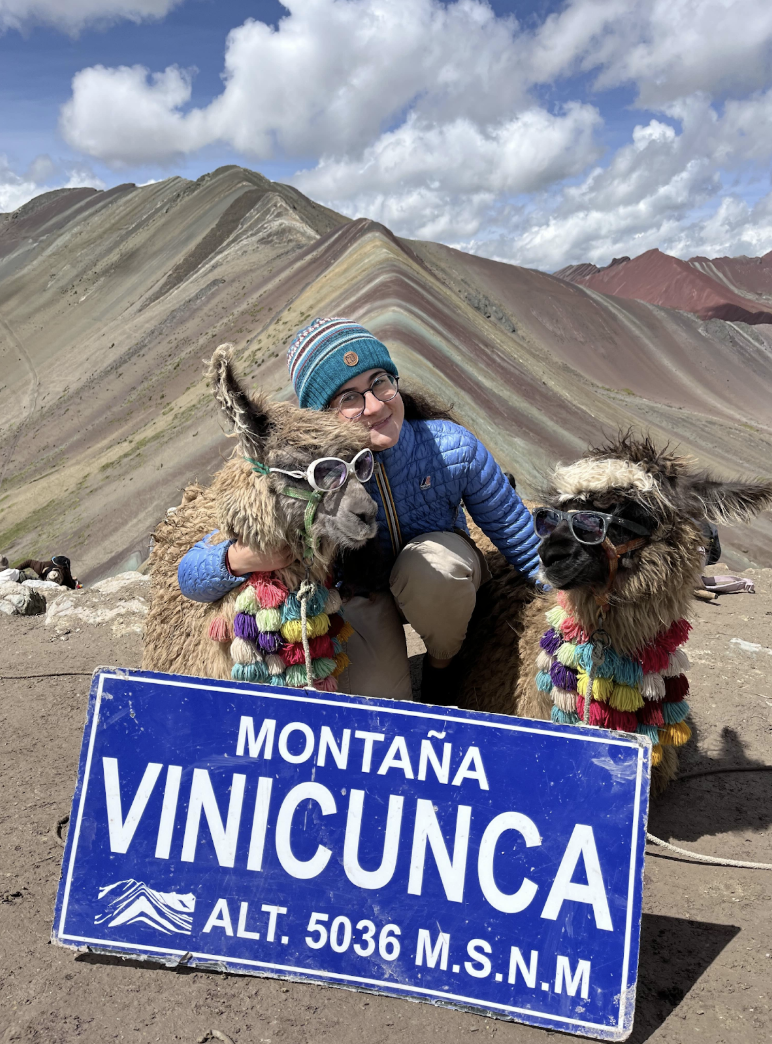
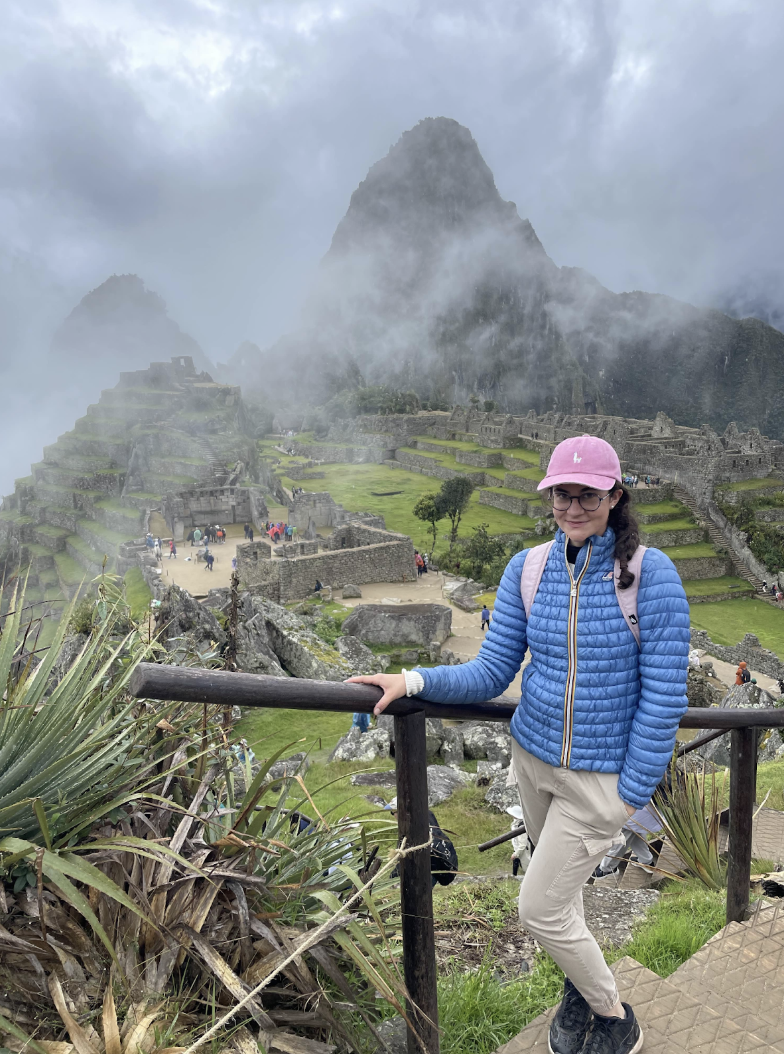
When our MEDLIFE group traveled inland, the landscape changed—but so did the people and their stories. The thin air of the Andes made every breath a conscious act, and the mountains seemed to watch over the valleys with ancient, silent wisdom.
In the villages outside Cusco, I met men and women whose resilience was written in every line of their faces. I remember meeting Don Mateo, a farmer with hands rough as tree bark, who invited us to share a lunch of potatoes and cheese by a tumbling stream. He spoke of his fields, of the unpredictable rains, of the struggle to send his daughters to school. “The land gives,” he said, “but only if you respect it.” I saw that respect in every careful movement, in the way he touched the soil, in the way he greeted the sunrise each morning.
Children in the Andes grew up fast. I watched little girls herd sheep up impossible slopes, their braids swinging, laughter echoing through the thin air. Boys helped their fathers repair stone terraces, learning ancient skills passed down through generations. Yet, in their eyes, there was still mischief, still that universal spark of childhood hope. One day, I joined a group of women weaving blankets. Their fingers moved quickly, weaving not just patterns but stories—symbols for the mountains, for water, for family. “We weave our lives into these threads,” one woman told me. She handed me a strip of bright cloth, and I traced its rough edges, feeling the weight of tradition and love.
The Andes taught me that resilience is not just survival—it’s adaptation, it’s pride, it’s finding beauty in hardship. I saw it in the way people gathered for festivals, in the way they prayed to the mountain spirits, in the way they welcomed a foreign student into their circle, offering food and laughter without hesitation. As we left, a little boy pressed a small stone into my hand—a token “for luck on the road ahead.” I carried it with me, a reminder that sometimes, the smallest gifts hold the greatest meaning.
Into the Sacred Valley: Traditions That Endure
The Sacred Valley was a place where past and present danced together. Here, tradition lived not in museums, but in the daily rituals of life—in the planting of potatoes, the blessing of rivers, the songs sung at dusk as shadows stretched across the fields.
Traveling by bus along winding roads, I watched the valley unfold: emerald terraces carved by Inca hands, villages painted in sun-faded hues, market stalls overflowing with maize and quinoa. Our guide, Marisol, grew up in this valley. She spoke reverently of Pachamama—the earth mother—and the rituals that shaped her childhood. “Every seed we plant, every stone we move, is a prayer,” she said. We visited a school perched on a hillside, where children greeted us with songs and questions. Their curiosity was electric. They wanted to know about my home, my studies, my favorite Peruvian food. I told them about Italy, LA, the very difficult Caltech, about my family, about the things I hoped to learn from them. We played games in the schoolyard, our laughter rising above the valley floor.
One afternoon, we witnessed a traditional ceremony—a blessing for the harvest. Elders poured chicha into the earth, offering thanks for the year’s bounty. The air was thick with incense and song. I felt both outsider and participant, humbled by the depth of gratitude woven into every gesture.
Dancing with Life: Cusco’s Joyful Spirit
Cusco pulsed with joy, even in the rain. Its streets were a tapestry of history and hope—Inca stones beneath Spanish balconies, narrow alleys blooming with flowers and laughter. Every day felt like a festival, and every plaza was alive with movement.
The first night, I joined a crowd in the Plaza de Armas, drawn by music and dancing. The air was crisp, the lights golden. I watched as couples twirled in traditional dress, their steps telling stories older than the city itself. A little girl grabbed my hand and pulled me into the circle. At first, I stumbled, but soon I found the rhythm—spinning, laughing, forgetting my self-consciousness. Cusco was a city that celebrated everything: a soccer win, a saint’s day, the simple joy of being together. Street vendors sold sweet breads and corn on the cob; musicians played Andean flutes as children chased pigeons across cobblestones. I spent hours wandering the markets, marveling at textiles bright as rainbows, tasting fruits I couldn’t pronounce.
One afternoon, I met a group of university students practicing for a parade. They invited me to watch, then insisted I try on a costume—a heavy, embroidered skirt and a hat festooned with ribbons. I laughed at my reflection, but they cheered, snapping photos and teaching me the steps. “In Cusco, everyone dances,” they declared. The city also held space for reflection. I visited ancient temples, lit candles in quiet chapels, climbed steep streets to watch the sun rise over red rooftops. In those moments, I felt small and infinite—a single heartbeat in the city’s long, unbroken song. And then Machu Picchu…well, no words needed, for this treasure in the mountains. ⛰️
Leaving Peru was harder than I expected. As the plane lifted over Lima’s endless sprawl, I pressed my face to the window and watched the city shrink into a blur of lights and memory. I carried with me more than souvenirs: I carried stories, faces, lessons that pressed against my heart and refused to be left behind.
Back in LA, the comforts of campus felt both familiar and strange. My classmates’ voices, the scent of coffee and bread, the order of everyday life—all seemed unchanged, yet I was not the same. I found myself seeking out little reminders of Peru—a woven bracelet, a photo of the children, the rough stone from the Andes in my jacket pocket, and the passionfruit smoothie at red door.
I struggled to put my experience into words. How could I explain the way the hills of Lima had taught me humility? The way a mother’s gratitude had made me question everything I thought I knew about giving? The way a child’s laughter could break your heart and heal it at the same time?
I threw myself into my studies with new purpose. Medicine was no longer an abstract pursuit—it was a promise, a responsibility. I joined campus organizations even more, shared my stories, tried to build bridges between my world and the one I’d left behind. Sometimes, I felt overwhelmed by the gulf between abundance and need, by the unfairness that still gnawed at me. But I also felt hope—an urgent, persistent hope that small acts, multiplied, could change the world. I was not brave enough to write this, I needed time.
Peru left me with questions I’ll spend a lifetime answering. What does it mean to serve without saving? To honor tradition while embracing change? To let yourself be changed by the people you came to help?
I don’t have all the answers. I only know that I am different now—more open, more grateful, more willing to listen. I carry Peru within me: the music, the mountains, the hands I held, the lessons I learned. And wherever I go, whatever I become, I will try to live as they taught me—finding reasons to celebrate, to share, to hope.
My journey is far from over. In many ways, it has only just begun.
Epilogue: A Letter to the Reader
Dear Reader,
If you have traveled this far with me—across oceans and continents, through the tangled streets of Lima and the soaring silence of the Andes—thank you. Thank you for stepping into my shoes, for opening your heart to the lives and lessons that reshaped me. I have tried, with every page, to honor the people who welcomed me into their homes and stories, and to be honest about my own transformation along the way.
When I first set out for Peru, I was searching for something I couldn’t name—a sense of purpose, a test of my resolve, a deeper understanding of what it means to help. I thought I would be the one offering service, bringing knowledge or comfort to those in need. But the truth is, I was the one who received the greatest gifts.
Peru taught me humility in the face of hardship, and awe in the presence of resilience. I learned that suffering wears many faces, but so does hope. I learned that medicine is not just a pill or a procedure, but a hand held, a word spoken, a promise that you are not alone. I learned that education is a form of healing, and that community—real, messy, beautiful community—is the strongest medicine of all.
I carry with me the laughter of children who turned dust into playgrounds, the wisdom of elders who measured wealth in memories rather than money, the songs and dances that insisted on joy in the very shadow of difficulty. I carry questions, too: about justice, about privilege, about what it means to live a life that matters—not just to yourself, but to the world around you.
If you are holding the Tech now, perhaps you too are searching. Maybe you are wondering how to bridge the distance between worlds, or how to serve without saving, or how to let yourself be changed by the people you meet. I cannot give you answers. But I can tell you this: the world is full of places where your presence, your willingness to listen, your open hands and heart, can make a difference. Sometimes the greatest gift you offer is not your expertise, but your humility. Sometimes the most profound act is simply to show up, to witness, to walk beside someone in their struggle or their celebration.
I hope my story encourages you to step beyond your comfort, to seek out the unfamiliar, to risk being changed. I hope it reminds you, as it reminded me, that every life is a story worth hearing, every community a lesson in survival and grace. The bridges we build—between nations, between hearts, between past and future—are what make us truly human.
Peru will always be a part of me. I hope, in some small way, it becomes a part of you as well.
With gratitude and hope,
Camilla